Tesla Owner Putting His Money Where His Batteries Are
Microgrids are starting to come into their own, and Tesla Owner Elon Musk is drawing attention by claiming storage can fix energy problems around the globe.
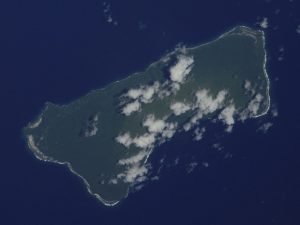
Ta’u Island is 100% solar thanks to Tesla storage batteries.
Microgrids helped small islands like Ta’u of American Samoa go completely solar. Off North Carolina’s coast, Ocracoke’s grid security was increased by a small solar microgrid. It will keep the island running along with a small diesel generator the island has had if the single transmission line from the mainland to the island is disrupted. Hawaiian island Kauai also discovered the beauty of microgrids with a solar+storage system, the island was able to go off fossil fuels altogether.
Islands are so interested in microgrids because shipping fossil fuels makes energy production more expensive than it is on continental America or other mainland countries. Many islands have jumped on the bandwagon, reducing or erasing fossil fuel use for each island.
Tesla started the year by increasing production of the new storage batteries, causing the prices to drop more than they already were. As microgrids have become more affordable, they have become a viable option for communities and municipalities.
With his factory pumping out batteries, Musk is making sure people know his product can do what fossil fuel energy plants cannot. In March, he told Australia his batteries could solve the rolling blackout issues in South Australia after a gas shortage and storms disrupting transmission and closing wind farms and power plants in 100 days. Australia took Musk up on his bet, and Tesla is currently ahead of schedule on the 100 day deadline.
Musk was so confident in part because Tesla had built a smaller battery storage system for California in three months in late 2016.
Tesla is not the only one bringing renewables to places in need. Australian company ZEN Energy proposed another project for Australia when rolling blackouts hit a city after a heatwave. Several companies and wealthy environmentalists have been making sure islands have a variety of energy options.
Plans for microgrids are being put into place for facilities like correctional facilities and hospitals where backup for power outages are vital. Microgrids are currently being set up in Puerto Rico to put hospitals back in business.
Beyond relief, Musk, in response to a tweet, claimed Tesla solar+storage systems could be the answer for Puerto Rico as the territory recovers and decides how to increase its grid security. The governor seemed to like the idea, so who knows what is in store for solar and microgrids in the upcoming year. As long as Tesla and other solar companies rise to solve energy crises, there will be evidence that solar can do what fossil fuels cannot.
- Published in Solar News, Solar Technology
Words to Know in the Solar Industry
The jargon of the solar and energy industries can be confusing. Knowing common words in articles will make researching solar easier.
Duck Curve
This term applies to municipal operations more than individual arrays.
The generation of solar peaks around midday while energy demand peaks in the evening. When plotted on a line graph this data looks like the side of a duck, the dip in the middle being the back and the head being the peak around evening. This curve characterizes a challenge solar and renewables face.
Solutions include storage, production diversification, and conservation incentives.
Grid
Power plants, transmission systems, and houses or corporations receiving energy create the basic power grid. With personal energy production like solar panels, individuals can now put the energy they produced on the grid. In North Carolina, Duke Energy buys that energy through an equivalent deduction in power bills.
Meter
Power companies keep track of customers’ energy use through meters.
Net Metering
When individuals have a power production source, the energy they produce but don’t use goes on the grid, decreasing the energy amount on the meter as it is sent into transmission lines. Net metering works like net gain. The energy the customer pays for takes into account the energy they put on the grid.
Solar Array
A solar array refers to the panels and how they are set up at a site.
Solar-plus-storage
A large challenge for renewables has been the necessity of using it as it is produced. Because of this, a household may not use all of the energy produced by solar panels in the daytime when people are working but will need it in the evening when energy production is reduced or stops altogether.
This issue was solved by the invention of a storage battery. It stores energy to be used later on.
- Published in Uncategorized
SolFarm Employee Highlight: Edward Wright
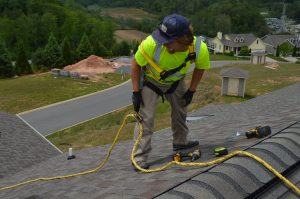 This week at SolFarm Solar, we are highlighting one of our newer staff members, Edward Wright. Having been born in the UK, Ed came to the United States as a boy. He graduated from Appalachian State University with the appropriate technical degree and began an internship with SolFarm Solar. Later accepting a professional position with SolFarm as a Solar Installer, you are sure to see him on top of SolFarm roof-tops and at SolFarm Events. When asked about his passions, he states, “My passion is bringing innovative renewable energy technologies to our communities as well as communities in developing nations. I love soccer (football), disc golf, and stomping my feet to some good live music! Especially bluegrass!”
This week at SolFarm Solar, we are highlighting one of our newer staff members, Edward Wright. Having been born in the UK, Ed came to the United States as a boy. He graduated from Appalachian State University with the appropriate technical degree and began an internship with SolFarm Solar. Later accepting a professional position with SolFarm as a Solar Installer, you are sure to see him on top of SolFarm roof-tops and at SolFarm Events. When asked about his passions, he states, “My passion is bringing innovative renewable energy technologies to our communities as well as communities in developing nations. I love soccer (football), disc golf, and stomping my feet to some good live music! Especially bluegrass!”
Ed has traveled to Costa Rica twice and once to Nicaragua to install several small off grid PV battery systems for rural homes and organic coffee farms. “These systems were for families who were unable to afford grid power or the power company was unwilling to bring grid power to those locations.” Ed also has experience servicing existing projects such as, wood-fired rocket stove hot water heaters, micro hydro electrical systems, permitting and solar design. Ed is a welcomed and loved member of the SolFarm team. You too will be able to catch up with him at the next SolFarm event or at your personal solar install.
- Published in Solar News
Harvey, Irma, and Maria Have a Silver Lining for Solar
While the barrage of hurricanes destroyed homes and lives, there may be a silver lining on the horizon.
In the face of ruined energy municipalities, affected states and territories have a choice to make: repair or rebuild.There is a chance Texas, Florida, or Puerto Rico could follow the path New York took after Sandy. New York created a plan to increase grid resiliency through microgrids and production diversity.
Why There Should Be a Change
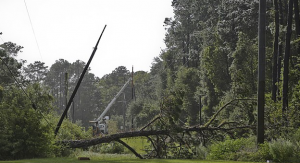
Powerlines down in Florida after Hurricane Irma
Texas and Puerto Rico were vulnerable because utilities produced energy far from consumers, and long transmission lines were outdated. Poles were easily knocked down, and once they were consumers were cut off from energy. Florida had modernized or ‘hardened’ almost half of their transmission wires, but still suffered crippling outages for days. Where the poles were hardened or transmission wires buried underground, transmission was largely protected.
What’s Being Done Now
After Irma, Florida decided to analyze their municipal energy systems, but it seems they are putting their trust in hardening the system, sending funds and effort in that direction while the analysis takes place. Texas gives counties and towns a lot of freedom, so local government will decide whether to invest in microgrids and diversity or system hardening.
Puerto Rico’s biggest concern is just getting the lights back on. Weeks after Maria, Puerto Rico is rebuilding and will be for months. Their government owned utilities will be privatized. After that, Puerto Rico will have options about how to make sure a disaster on the scale of Maria never happens again. With their grid decimated, they will have room to completely change and upgrade, but with the Puerto Rican utility’s debt and the severity of the outages, they may just replace what they had to begin with.
Relief efforts in Puerto Rico include solar and batteries with solar companies and associations donating resources to make sure that necessities and as many families as possible have power while the utility system is being rebuilt.
Why Microgrids Are Viable Solutions
They are already being used. If microgrids can be successfully used in relief situations and on an individual basis, they can be used on large scale too. Tesla and other solar companies have even said they are ready to meet the challenge, and the governor of Puerto Rico has seemed receptive.
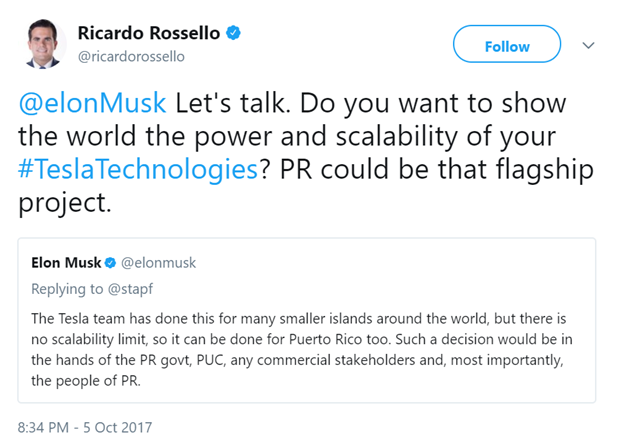
In the face of another natural disaster, a microgrid would mean a town would not be powerless even if a powerline in a large transmission system gets knocked down. One of the beauties of a microgrid is that it is local. For a regulation system like Texas’ where towns and counties have control of municipalities, microgrids could be perfect backup for outages due to transmission or even generation difficulties of large-scale utilities.
Finally, diversifying energy production means the pressure on large power plants to produce all the power for an area is lessened. If something happens to that plant or if the power it is producing is not enough, other energy sources will be there to make sure the lights do not go off.
- Published in Solar News
So You Have Solar Panels. What Next?
Solar panels are a giant step to reducing a carbon footprint, but there is always something else to do (or not do) to make a green impact! Acting on some of these suggestions will make those solar panels will be more effective than ever.
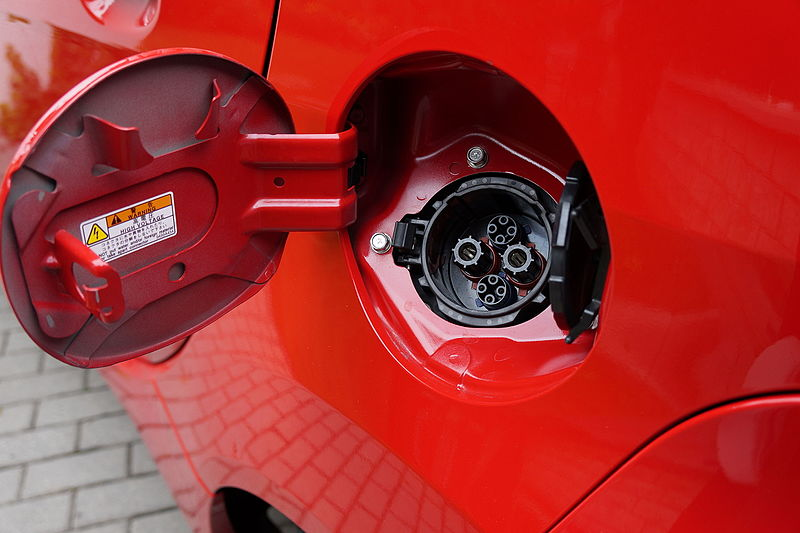 Electric Car
Electric Car
Electric cars hold great potential. Without emissions, they can make that work commute guilt-free. Depending on where they’re being charged, their lack of emissions on the road is cancelled out at home by the emissions created by the power plant creating the energy charging them.
However, if a solar array is large enough to produce energy for a household or corporation plus some, an electric car could be charged via solar rather than the coal or natural gas the power company is burning. With a home or company and car largely powered by solar, life at home and on the road would be as green as possible.
Update your Appliances
While appliances can be expensive, they make up huge portions of a home’s energy bill. Including heating and air, a water heater, kitchen appliances, and a washer and dryer, appliances can be responsible for a about two thirds of the average annual energy bill. Making sure all appliances are as energy efficient as possible will decrease how much energy a household or company uses on a daily basis.
Take advantage of that home renovation to make sure appliances are updated. Be sure to use any appliances, old, new, or green, creating responsible habits about thermostat temperatures and awareness of hot water usage.
Weatherproof Your House
Depending on how weatherproofed a building already is, this may be the cheapest change available. Getting every door and window sealed will keep in cool air in the summer and warm air in the winter.
If the building is lacking in insulation, adding some will also help the building retain a proper temperature.
These are only a few suggestions to cut emissions, energy use, and costs. All require some investment but with the proper care can save money in the long term.
- Published in Tips and Tricks
Irma Can’t Stop Solar
Irma brought down energy infrastructure as she blew through state after state. The Carolinas lucked out compared to Florida. While Duke restored power to the tens of thousands of Carolinians without in a matter of days, Floridians who call the Keys home expected to be without power for weeks.
Of the millions without power in Florida after Irma, there were reports of one man who managed to keep the lights on. He was able to do so with the help of a solar array and a storage battery.
A combination of an array and battery creates a microgrid, a system consisting of generation and storage. With such a system, individuals use a utility company’s generation as backup when their system is not sufficient. Microgrids producing enough energy allows an individual to operate when a utilities company is down for the count.
Of course, if solar arrays are broken, ripped off a roof, or covered in snow, the microgrid no longer receives power. However, a backup plan to municipal utilities could always come in handy.
The Floridian was able to power part of his house, including air conditioning and his refrigerator. Whether looking for some extra security or preparing for the apocalypse, a microgrid rises to the occasion. With such a system, lives could even be saved as air conditioning or heat is kept on and perishable food is kept cold. Some of the crises we saw
Consider the possibilities of not being dependent on municipalities.
- Published in Solar Technology
















